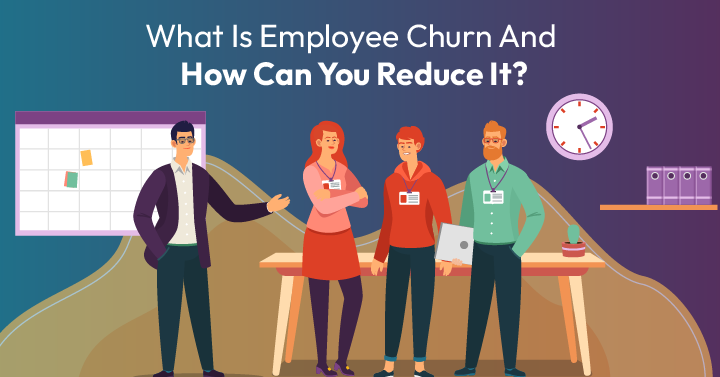Covert surveillance is thrilling to watch in a true-crime episode on Netflix. But applying it in the workplace would seem a bit extreme. Many perceive it as a sign that the company does not trust its employees. There are, of course, employee monitoring ethics that restrict the data employers and companies can track.
In a professional context, surveillance at work is called employee monitoring. It is a necessary evil because companies need to verify that employees are not misusing company time. Irrespective of the fact that they are collocated, distributed, or remote.
Over half of the global workforce is currently working remotely. Thereby reinforcing the justification for employee monitoring from a security and safety perspective.
.
1. Is it ethical for you to monitor computer usage?

The intention of monitoring computer usage is to track internet activity and usage. So long as you're not recording personal data and withholding your employees' monitoring activity, employers have the right to monitor work-related devices. Routine monitoring prevents employees from accessing websites that can provide a backdoor entry to hackers. Also, employees should not misuse company time for personal matters.
It is ethical to monitor computer usage so long as you intend to prevent a decline in productivity. If an employee is found to access sites deemed unconstructive or irrelevant to work, such as gaming, social media, or scamming sites, then the IT department can block such sites to deter future visits.
2. What is Employee monitoring software?

An employee monitoring software is an application that can be web or mobile phone-based. It helps business owners keep track of online activities in the form of
- websites visited,
- hours spent,
- breaks-taken, and
- workflow progress.
A few examples of employee monitoring tools are TimeDoctor, Toggl, and Rescue time. Such tracking software enables employees to track where their time goes and deter unlawful activities. They include proxy stand-ins, prolonged idle time, and unneeded overtime.
Let us deep-dive into the types of employee monitoring programs;
3. Types of employee monitoring

The foremost reason employers turn to employee monitoring is to make sure that employees are productive. That they are doing the work managers delegate to them or that they take up proactively. Other reasons include quality and policy compliance and conflict management resolution. The types of employee monitoring are;
3.1 Call monitoring
Businesses can tap company phones and work mobiles to record conversations. These clips improve the quality of customer service. Executives can study the support provided and act on the feedback left. It can be replayed and used to script appropriate responses for executives in client-facing roles.
3.2 Video surveillance
CCTV equipment at strategic locations captures the perimeter of the building. It can monitor the entry and exit of personnel and equipment. While the recording shows you where your workers are, video surveillance cannot confirm how productive your employees are. Unless the camera is directly facing computer screens, which is illegal.
3.3Messaging and email monitoring
Collaboration platforms such as Slack or its alternatives like Samepage give complete permissions and access at the administrator level. Employers can read message threads. Similarly, work emails are under the control of the office IT department. They can track incoming and outgoing email exchanges.
3.4 Networking surveillance
A network monitoring system checks and blocks suspicious activity, programs, and internet usage. It prevents employees from accessing distracting websites during work hours.
3.5 GPS tracking
GPS tracking helps trace employees whose work is onsite or away from the office, such as delivery drivers and construction. It tracks movements on the worker's phones and matches them to timesheet punch lists. This ensures that the right worker is in the right location at the right time.
3.6 Biometric attendance and timesheeting
Biometrics makes use of facial or fingerprint recognition to restrict employees in collocated offices. It is programmable by the employee's role, thereby keeping them out of certain areas. Timesheets are either manual or digital and track the employee's time.
4. How Is Monitoring Employees Ethical?
Employee monitoring is ethical, provided employers do not resort to stealth monitoring methods. These include keystroke logging and screen recording. It can capture sensitive information (such as login passwords to banking sites) that compromises the worker's privacy.
There are employee monitoring ethics to be followed, which first and foremost start with informing your workforce. Starting from the intention to use employee monitoring measures and then obtaining their consent.
The best way to reassure staff is to be honest and upfront about what will be monitored and tracked. It should be accompanied by the reasons for doing so. For example, recording calls for training and quality purposes can help the employee understand aspects like:
what they are getting right and what they should work on in their communication. And must restrict such monitoring to work mobiles and headsets.
Work a set of guidelines governing data protection into your company policy. Employees can read this thoroughly, understand the implications of such rules and raise questions.
Exploring the ethics of employee monitoring will help you understand legal considerations and impacts.
5. Ethical implications of employee monitoring: what leaders should consider

The benefits of employee monitoring ethics are;
5.1 Reduced time mismanagement
Workplace distractions in coworkers, email reverts, and agendaless meetings cause workers to do shallow work. Statistical research by Talkbox reveals that 60% or less of work time is actually spent productively. And interruptions cause employees to take 27% more time to complete a task. Thereby commit up to twice as many errors and experience twice the anxiety.
It's normal to be a little distracted during the workday. But prolonged and unchecked distractions eat into the time that you're paying your employees for.
When employees know their time is being monitored, it helps them plugin and be more conscious of the clock. In turn, you pay them for the actual work completed and help increase overall productivity.
.
5.2 Increased transparency and visibility into activities
Employee monitoring software can help you see
- what your workers are on,
- how long the work would take, and
- which internet resources they availed
(i.e., the Website traffic and third-party applications).
When there is visibility into the business's happenings, employees can also explain what they are doing and what slows them down.
5.3 Insights into employee performance
At first, you can form a productivity cluster based on actual effort hours, work estimates, and employee conduct. Thereby, it helps you identify and separate high performers from the average worker. Consequently, you can reward well-performing teams and make an example of them. Underperformers can also benefit from observing their habits and learning how to correct time misuse in the future.
5.4 Doing away with micromanagement
Employee monitoring ethics keep employees accountable without managers having to breathe down their neck constantly. It frees up a manager's time to plan out schedules, strategize on projects, and institute training programs for their teams. Ethical employee monitoring establishes a worker's credibility.
While there are benefits to employee monitoring, it isn't without its drawbacks. The issues leaders should consider are a breach of trust, legal issues, and privacy concerns. Even if a business gets consent from its employees, the underlying sentiment 9 out of 10 times would be anxiety. There will be concerns over
- what gets recorded,
- how long it'll remain on the system, and
- whether the employer will use this information against the employee as a disciplinary action.
The questions you have to ask yourself before proceeding to monitor your employees are
Who, what, how, and where are you monitoring?
As a leader, you should make sure that you're abiding by employee monitoring laws. Consult with attorneys on your legal team (or a 3P lawyer) about the extraction and usage of information obtained from employee monitoring.
Routinely update your policies according to data protection acts applicable to your country. And as always, inform your employees. After all, it's their labor keeping your business going, and losing their trust leads to losing them eventually
.
6. Employee Monitoring Laws on an International Scale

From the perspective of preserving the business's integrity and its stakeholders and employers, most companies regard employee monitoring as the end justifying the means.
Employee monitoring has to comply with laws. For example, in the U.S, states such as Delaware, California, and Connecticut make it compulsory for employers to inform employees that they monitor digitally. They can monitor your workplace communications, such as business phone calls and computer usage, and get access to your voicemail and email.
The ECPA act (Electronic Communications Privacy Act) limits how electronic monitoring appliances can be used. While employers can listen in on work calls, they cannot tap or listen to personal devices' conversations.
An employer can install audio recording devices in common areas such as hallways. However, they need to stay away from bathroom stalls, lockers, and cafes. Under special conditions, union contracts are exempted from surveillance. Most companies in Europe refer to the General Data Protection Regulation (GDPR).
Such companies also have to perform a privacy impact assessment. It is to get visitors and employees on a site to consent to how their data will be used and stored. It is a legal framework stating how companies collect personal information
.
7. How are employers monitoring their employees?

While it's perfectly legal to want to know what your workers are up to, employee monitoring ethics help you stay within acceptable limits. Employers monitor their employees based on what's allowable and what isn't. Employers cannot proceed to watch their pool without consent. If they do so and do not comply with data protection acts, it's grounds for a lawsuit. This can in turn entitle the aggrieved worker to compensation.
Employers monitor their employees using electronic, audio, video, and location surveillance tools. Digital technologies such as websites and noise blockers keep the distractions minimum. Therefore prevent employees from spending time on sites deemed irrelevant to work.
This again depends on the industry and department. For example, construction workers for an engineering firm do not need social media. Still, the same firm's marketing and customer support team will need access to social platforms to do their job. And even here, it's not about cutting off access to such sites.
Instead, it is about tracking activity and hours spent on work. It goes to ensure that the work is relevant and profiting the company in some manner.
If employee monitoring ethics are rigorously followed, would you be in favor or against the practice? Let me know in the comments section!
 Interested in Virtual Team Building Events?
Interested in Virtual Team Building Events?




















